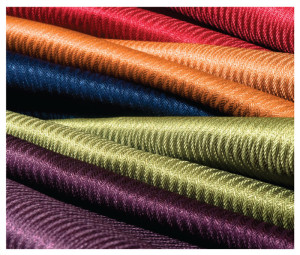
The demand for textile dyes is largely dependent on the growth of the textile industry. The textile industry is poised on a rising growth curve what with the demand for high quality, vibrant fabric being on a continuous increase. With greater consumer spending and awareness, people want fabric that will retain its vibrant colours and print for long times and cause no harm to the environment. Greater efforts are therefore directed towards developing technologies and dyes that will be eco-friendly and pass stringent quality standards.
Conventional dyeing technology which uses vat dyes and reactive dyes requires large quantities of water and generates high effluent load. In order to conserve water and minimize the environmental impact, a new technology was introduced few years ago. This is called the ‘Air Dyeing’ technology.
Air Dyeing Technology- Revolutionary Concept
Under the conventional dyeing process, sizeable quantities of chemicals are needed for ensuring proper dyeing of the fabric and subsequently these chemicals find their way into the lakes, rivers and seas of the region. At the same time, vast amounts of water are consumed during the dyeing process by the textile industry. Both these factors cause substantial damage to the eco-system of the region. Air Dyeing is a revolutionary method of dyeing that causes minimum harm to the environment.
Dyeing With Lowest Quantities of Water
The company that patented this technology claimed after conducting an independent assessment that ‘air dyeing’ the fabric reduces water consumption by 95% and energy use by 86% depending upon the type of dyeing and fabric used. This reduces the industry’s share towards global warming by 84%. The key factor of this technology is airflow with air being a perfectly suitable transport medium. The jet dyeing machines use air instead of dyed liquor as a transport medium for piece goods and this reduces consumption of chemicals and water to a great extent.
In this technology, the fibre has the dye injected into it rather than on it and therefore the fibre is not affected by cleaning and bleaching agents. The fabric can be washed with white or coloured clothes as the technology guarantees no bleeding or leaching of colour. The technology is viable with the sports-leisure, lingerie, swimwear segment of the textile industry too. The colours and prints of fabric obtained through this technology look vibrant and last longer and soft to touch and feel.
Key Features
- Eliminates the incidence of water pollution in the process of colour application as air is being used as the transport medium instead of water
- Energy requirements are minimized greatly by about 40% or so; thus lowering the costs of operation
- No use of boilers, drying ovens, screen printing machines and scouring chemicals thus removing the main polluting sources
- About 25% reduction is obtained in total processing time
- Lowest water consumption and waste water outflow levels
- Consumers are offered sustainable fabrics at realistic prices
Today, textile dyes have become an integral aspect of every man’s life and with every individual becoming more aware of his social responsibility towards the environment, the quest for superior and better dyes and technology is on. ‘Air-dyeing’ technology is just one step in this direction.